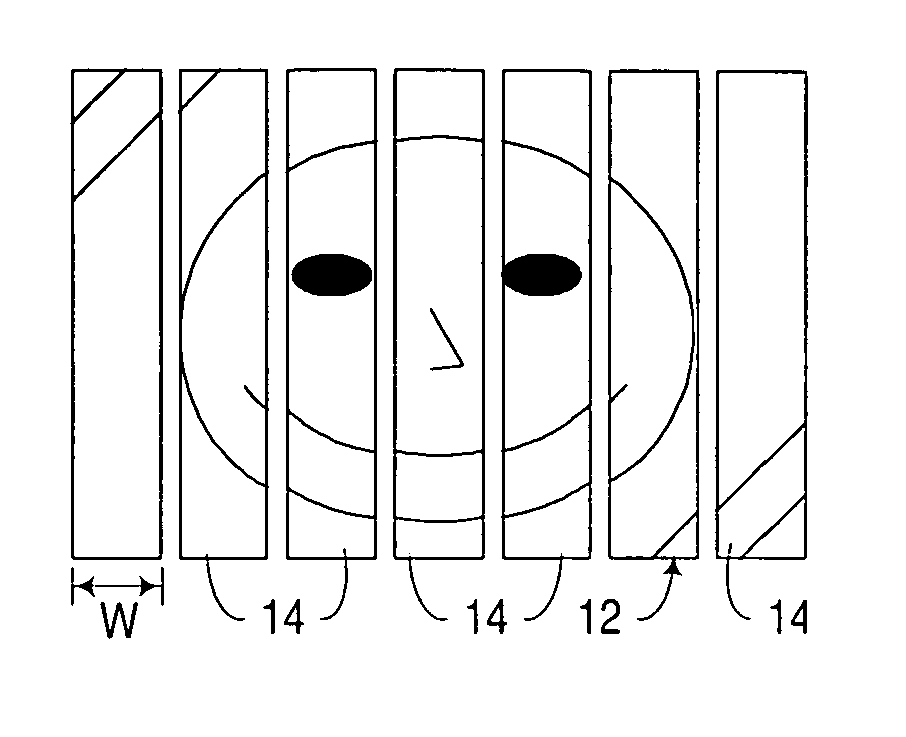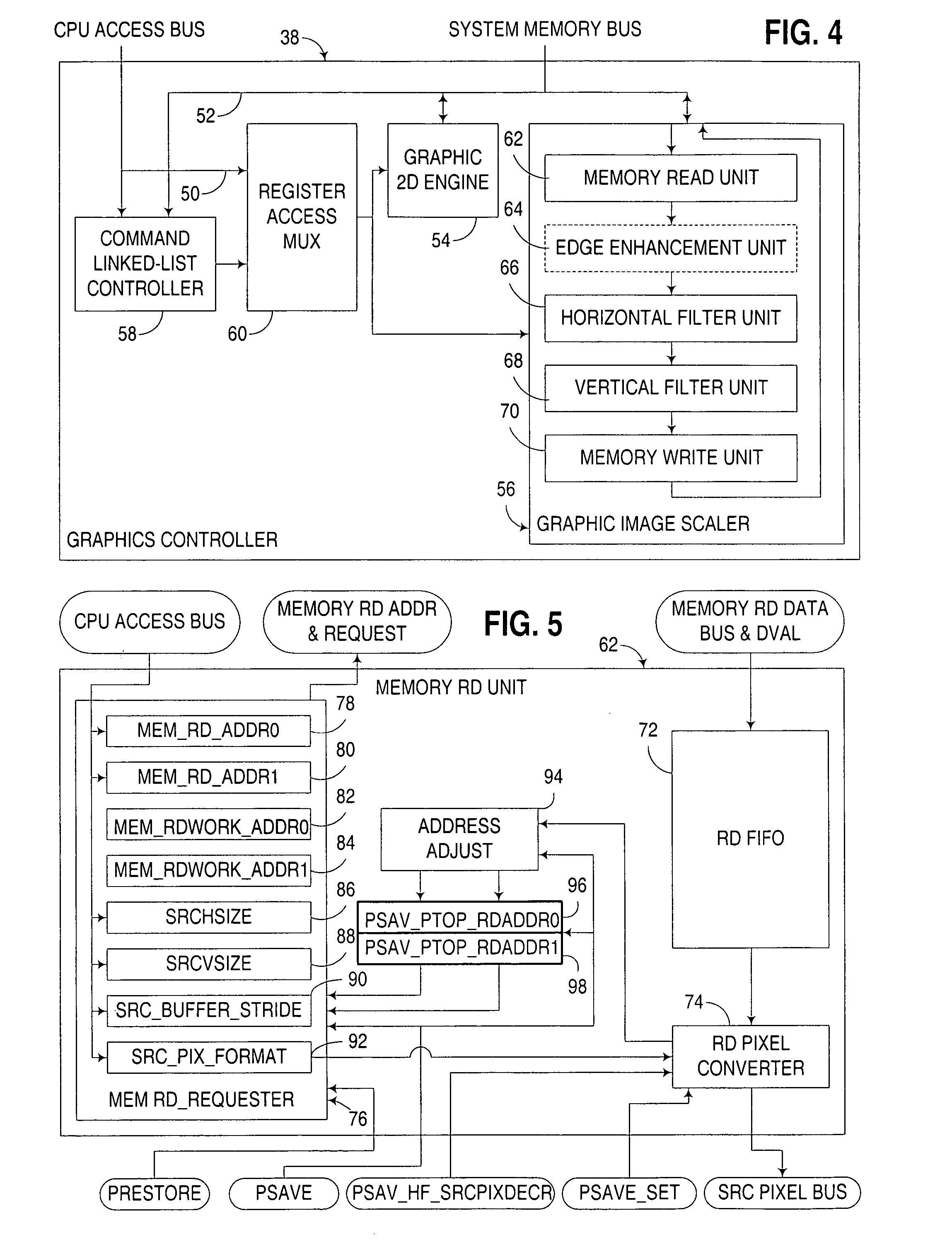Image scaling employing horizontal partitioning
a horizontal partitioning and image technology, applied in the field of graphical image processing, can solve the problems of placing a significant burden on the central processing unit (cpu) of many electronic devices, affecting the performance of the image memory subsystem and associated bus, and reducing the horizontal size of the destination image. , to achieve the effect of reducing both cost and power consumption and less real esta
- Summary
- Abstract
- Description
- Claims
- Application Information
AI Technical Summary
Benefits of technology
Problems solved by technology
Method used
Image
Examples
working example
[0109]FIGS. 10 and 11 illustrate an exemplary image scaling operation performed on an exemplary source image using the partitioning in the manner described herein. This example assumes a Line Buffer Width (LBWidth)=32 pixels, which is a fixed aspect of a given design.
[0110] As shown in FIG. 10, the source image memory buffer 250 has a size of 1024×840 pixels. It is a YUV buffer with separate Y & UV areas, each of which has 840 lines of 1024 bytes per line. There are 2 bytes per pixel on average. The source image region 252 has a width of 31 pixels and height of 50 pixels, and is offset from the origin of the source image memory buffer 250 by j lines vertically and k pixels horizontally. This is so in both the Y and UV areas of the buffer. As such, the following source image parameters exist: [0111] SrcHSize=31 pixels [0112] SrcVSize=50 lines [0113] Src_Pix_Format=YUV [0114] Src_Buffer_Stride=1024 [0115] MemRDAddr0=YSrcRegionStartAddr=SrcYOrigin+(1024j)+k [0116] MemRDAddr1=UVSrcRegi...
example walk-through
[0135] A. Initialization
[0136] First, the scale task parameters are determined and programmed into the graphic image scaler's CPU-Access registers. At the Start / Busy signal rise, the PSave registers are initialized, as follows: [0137] PSav_PTop_RD_Addr0 / 1 copy initial Mem_RD_Addr0 / 1[0138] PSav_H_SrcCountPhase=0 [0139] PSav_HF_ReducCount=0 [0140] Psav_HF_IntermedCount=0 [0141] PSav_PTop_WR_Addr0 / 1 copy initial Mem_WR_Addr0 / 1
[0142] B. Scaling of First Partition
[0143] During scaling of the first partition, each unit of the image scaler operates as follows:
[0144] 1. Memory Read Unlit—reads Y & UV data separately, reading enough data per line such that the horizontal filter can generate 32 HF_Intermed_Pixels. Addressing for read requests is generated via MemRDWorkAddr0 / 1 and MemRDAddr0 / 1 registers. The horizontal filter and read pixel converter prevent the read requester from reading too much data, and the read pixel converter provides exactly 24 source pixels per line to the horizont...
PUM
 Login to View More
Login to View More Abstract
Description
Claims
Application Information
 Login to View More
Login to View More - R&D
- Intellectual Property
- Life Sciences
- Materials
- Tech Scout
- Unparalleled Data Quality
- Higher Quality Content
- 60% Fewer Hallucinations
Browse by: Latest US Patents, China's latest patents, Technical Efficacy Thesaurus, Application Domain, Technology Topic, Popular Technical Reports.
© 2025 PatSnap. All rights reserved.Legal|Privacy policy|Modern Slavery Act Transparency Statement|Sitemap|About US| Contact US: help@patsnap.com



